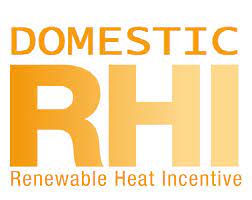With the UK wanting to achieve net zero carbon emissions by the year 2050, more than ever is being done to supply UK households with the renewable heating systems needed to meet those figures. The country has set a target to install a minimum of 600,000 heat pumps by 2028 which is just 6 years away.
The Renewable Heating Incentive, now better known as the Clean Heat Grant, was introduced to help the government do exactly that. Whilst the UK’s total emissions are yet to drop significantly, improvements are being seen across the country, with hopes that more homes will choose to ‘go green’ over the coming weeks and years as the country continues to tackle the 67.7 million tonnes of yearly carbon emissions currently being produced.
Below, we have explained more about the renewable heating incentive and its replacement that was introduced earlier this year – the Clean Heat Grant – as more of us begin to tackle this issue.
What Is The Renewable Heating Incentive?
With the cost of living and energy bills rising across the UK, many have turned to the renewable heat incentive scheme to source additional support.
The Domestic Renewable Heat Incentive, that is sometimes referred to as the DRHI, is a government backed financial incentive to encourage the use of renewable heat across the country and was introduced in 2014 to help the UK meet its renewable energy targets, also contributing to lower carbon emissions.
Who Is Eligible For The Renewable Heat Incentive?
Regardless of whether you live in England, Scotland, or Wales, you can apply for the renewable heat incentive. However, you must either own your own property or be considered a ‘private’ or ‘social’ landlord.
Unfortunately, those who have recently moved into a new build property are unlikely to be eligible though if you are building your own home, you may be.
Renewable Heat Incentive Scheme Claims
With the current renewable heat incentives, you can claim for three types of heating including biomass boilers, solar water heating and an array of specified heat pumps.
Payments are based upon the amount of renewable heat generated by the heating system in your home and can be made for seven years.
Payments are redeemed through the Domestic RHI scheme itself.
How Do I Submit A Claim?
In order to claim for the UK renewable heat incentive, there are a couple of documents you will need at hand to complete your application successfully.
You will need to ensure your installation has been completed and is commissioned appropriately, in addition to the ability to provide your MCS certificate.
You will also be required to obtain a domestic EPC for the property that is no older than 2 years old.
Renewable Heat Incentive UK For Businesses & More
It’s worth noting that there is a separate renewable heat incentive in place for businesses and non-profit organisations which provides said companies to claim for heating types including biomass, heat pumps, deep geothermal, solar thermal collectors, biomethane and biogas and combined heat and power systems.
Businesses and public sector organisations are eligible if their existing equipment was installed on 15 July 2009 or after though it must successfully meet a provided set of criteria prior to being confirmed eligible.
Other Key Information About The Renewable Heating Incentive
The ‘Clean Heat Grant’ replaced the Domestic Renewable Heating Incentive (DRHI) in April this year following a year-long extension due to the complications that arose mid Covid-19 times. Despite its new name, the purpose of the two incentives have remained similar, being introduced to support small domestic buildings install renewable heating systems/
The scheme itself also differs, whereby a one-off £5,000 payment can be made towards the installation of an Air Source Heat Pump (the favoured heat pump of the two) or a one-off £6,000 payment towards a Ground Source Heat Pump. The eligibility criteria follows a similar pattern, whereby the homeowner must be in ownership of an EPC that is less than 10 years old to apply. If yours currently exceeds the 10-year limit, you can pay for an updated one. However, EPC must not recommend that the homeowner should installs either loft of cavity wall insulation to pass.
What If I Secured The DRHI Before March 2022?
Don’t panic. If you secured access to the Domestic Renewable Heating Incentive prior to March 2022, you are still eligible to receive your quarterly payments for 7 years from the date provided once you had been accepted onto the scheme.
For more information about our radiators and electric radiators, don’t hesitate to get in touch with our heating specialists directly on 0800 876 6813 or email us at [email protected] today.

